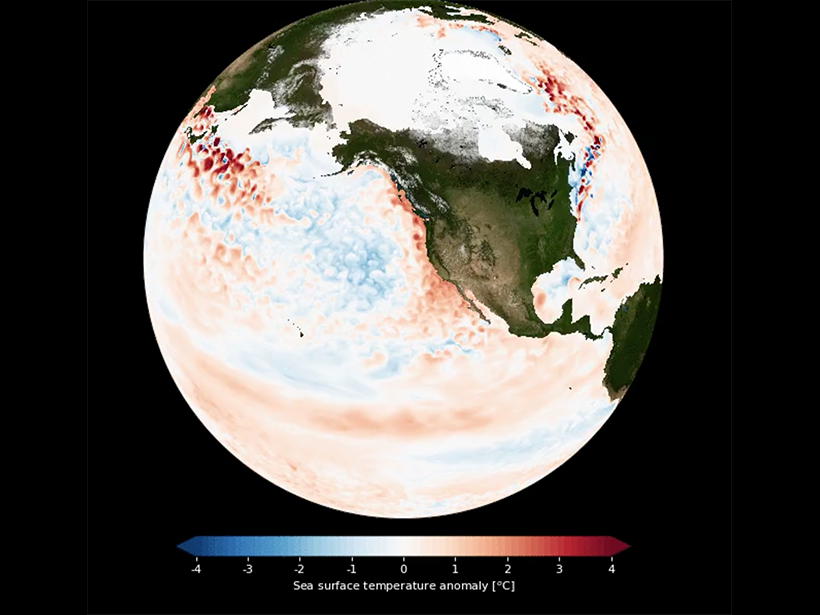Source: Geophysical Research Letters
Earth’s climate system is chaotic and nonlinear. This characteristic imposes limits on how well scientists can predict climate statistics related to temperature, precipitation, and other variables. (The degree to which skillful predictions can be made is called predictability.) The steady evolution of climate modeling over the past several decades has led to significant strides in seasonal climate prediction, but forecasting the climate over decades has proved more challenging.
At the timescale of decades, climate swings are driven by both internal dynamics, like the El Niño–Southern Oscillation, and external factors (e.g., volcanic eruptions). The limits and mechanisms of these phenomena are still not fully understood, which imposes boundaries on the climate’s long-term predictability.
Zhang and Kirtman recently explored climate predictability over decades. The authors applied an interactive ensemble coupling strategy to the Community Climate System Model (CCSM4) to create climate simulations with decreased atmospheric noise at the air-sea interface. In other words, they reduced short-term variability in the climate model. By reducing this noise, the authors isolated the climate signal in the model and were able to quantify how the noise affects predictability. To measure predictability, they used the nonlinear local Lyapunov exponent (NLLE) method, which was the first use of NLLE with state-of-the-art coupled climate models.
The study determined that the interactive ensemble approach underestimates decadal predictability compared to estimates generated from observational data. However, the results indicated that predictability varies by region. Forecasts from the North Atlantic were more predictable, for instance, whereas the Indian Ocean and the Southern Ocean were less predictable than the control simulations.
The authors also evaluated the predictability of subsurface ocean temperature in the North Atlantic. In regions without external climate forcings, the interactive ensemble method resulted in decreased predictability. In areas with both internal and external dynamics, predictability increased. The mechanisms for these patterns, however, require further investigation.
Although the study does not solve the challenge of long-term predictability of climate models, the findings do suggest that decadal predictability is related to both internal climate variability and ocean dynamics. (Geophysical Research Letters, https://doi.org/10.1029/2018GL081307, 2019)
—Aaron Sidder, Freelance Writer
Citation:
Sidder, A. (2019), Improving climate predictions over decades, Eos, 100, https://doi.org/10.1029/2019EO125013. Published on 04 June 2019.
Text © 2019. The authors. CC BY-NC-ND 3.0
Except where otherwise noted, images are subject to copyright. Any reuse without express permission from the copyright owner is prohibited.

